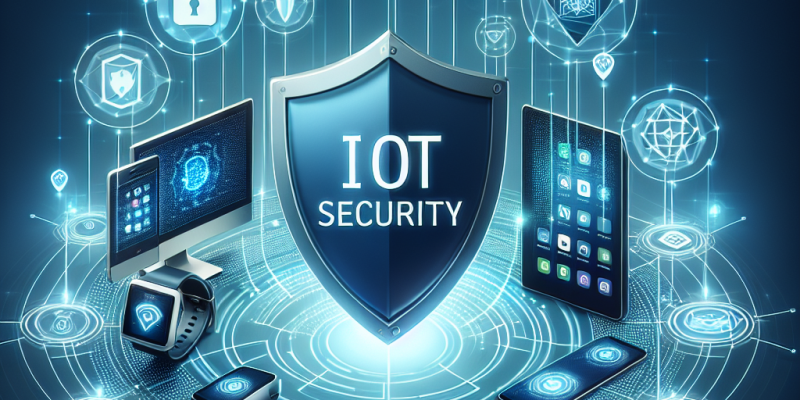IoT Security: Safeguarding the Devices that Connect Us

The Internet of Things (IoT) has revolutionized the way we interact with our environment, leading to enhanced efficiency, convenience, and a level of connectivity that was previously unimaginable. From smart home devices like thermostats and security cameras to industrial sensors and connected vehicles, IoT devices play a pivotal role in our daily lives and business operations. However, this interconnectedness also brings about significant security challenges that must be addressed to protect our data, privacy, and the integrity of our networks.
Understanding the IoT Landscape
As per various reports, billions of devices are currently connected to the IoT, and this number is expected to grow exponentially in the coming years. These devices typically collect, share, and analyze data, making our lives easier but also creating a rich landscape for cybercriminals. According to a 2022 report from the Cybersecurity and Infrastructure Security Agency (CISA), IoT devices are increasingly popular targets for cyberattacks due to vulnerabilities in their design, implementation, and end-user behavior.
Key Security Challenges in IoT
-
Inadequate Device Security: Many IoT devices are designed with convenience over security. Often, these devices are built with minimal processing power, limiting their capability to implement sophisticated security features. Default passwords are common, and many users fail to change them, leaving their devices vulnerable.
-
Data Privacy Concerns: IoT devices collect vast amounts of personal and sensitive data. If these devices are breached, attackers can gain access to private information, potentially leading to identity theft and other crimes.
-
Weak Network Defenses: Many IoT devices connect to home or enterprise networks, which can be compromised if the devices themselves lack adequate security measures. A weakly secured IoT device could serve as a gateway for attackers to access the broader network.
-
Lack of Standards: The rapidly evolving nature of IoT technology means that consistent security standards are still in development. This inconsistency can lead to various vulnerabilities across devices and manufacturers.
- Unsecured APIs and Interfaces: Many IoT devices rely on APIs for communication and functionality. If these APIs are not adequately secured, they can be exploited by malicious actors to manipulate or gain access to devices.
Best Practices for IoT Security
To mitigate the risks associated with IoT devices, several best practices can be adopted by manufacturers, organizations, and consumers alike:
For Manufacturers
-
Integrate Security by Design: Security should be a fundamental aspect of the device’s lifecycle, from design to deployment. Manufacturers should prioritize building secure hardware and software, incorporating features like authentication, encryption, and regular firmware updates.
-
Rigorous Testing and Auditing: Before launching IoT devices, manufacturers should conduct comprehensive security assessments and audits to identify and address vulnerabilities.
- Establish Standards: Collaborating with industry groups to create and adopt widely recognized security standards can help ensure that all devices meet a baseline security requirement.
For Organizations
-
Adopt a Strong Security Policy: Implementing a clear security policy that addresses the use and management of IoT devices within the organization is essential. This includes assessing devices for vulnerabilities and requiring strong authentication protocols.
-
Network Segmentation: Isolating IoT devices on separate networks can help contain potential breaches, reducing the risk to critical systems and sensitive data.
- Regular Updates and Maintenance: Ensuring that all connected devices receive regular security updates is crucial in protecting against newly discovered vulnerabilities.
For Consumers
-
Change Default Settings: Always change default passwords and settings on IoT devices to unique, strong credentials that are hard to guess.
-
Monitor Network Traffic: Utilize tools that monitor network traffic to identify any suspicious activity involving connected devices.
- Educate Yourself: Staying informed about the latest security threats and best practices for using IoT devices can empower consumers to take appropriate precautions.
Conclusion
The IoT landscape offers significant benefits across various sectors, enhancing the way we live and work. However, with great connectivity comes great responsibility. Addressing the security challenges associated with IoT requires collaborative efforts among manufacturers, organizations, and consumers. By adopting best practices and fostering a culture of security awareness, we can safeguard the devices that connect us, ensuring that the benefits of IoT can be enjoyed without compromising our privacy and safety. The future of IoT is bright, but we must prioritize security to illuminate the path forward.














